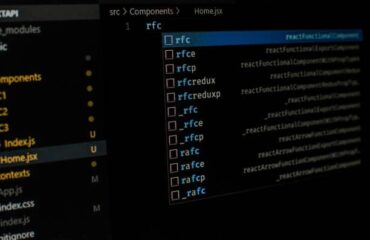Bootstrap stands out for its ability to deliver responsive design effortlessly. However, simply using Bootstrap doesn’t guarantee the best performance or user experience. Optimization is key. Here are ten essential tips that can help improve your Bootstrap site’s loading speed and user experience. We learned these tips from developers of some fast-payout casinos.
1. Minimize Bootstrap CSS and JavaScript
You can start with minified versions of Bootstrap’s CSS and JavaScript files. These files have all unnecessary characters removed, which improves your site’s loading time. Tools like UglifyJS for JavaScript and CSSNano for CSS can further optimize these files.
2. Use Content Delivery Networks (CDN)
CDNs spread files over many servers worldwide, making your site load fast everywhere. This speeds up Bootstrap access and lightens your server’s load. So, use CDNs to deliver Bootstrap files.
3. Customize Bootstrap Components
Bootstrap is modular. That means you can choose which components to include in your project. Use Bootstrap’s customizer to select only the components you really need. Do not use those that create unnecessary bloat.
4. Optimize Images
Large, high-quality images will slow down your site. Use tools like ImageOptim or TinyPNG to reduce the size of images. Also, consider such an option as lazy loading, which loads images only when they’re about to be seen on the screen.
5. First, Implement a Mobile Design
Bootstrap focuses on mobile-first. So, it is wise to start with the design for mobile users. This way, your website will work well on small devices, load faster, and offer a better experience on mobile networks.
6. Use Bootstrap’s responsive classes
Make full use of Bootstrap’s responsive utility classes. Instead of writing custom media queries, these classes can help you show or hide elements based on the screen size. It simplifies your CSS and makes it easier to manage.
7. Keep JavaScript to a Minimum
Bootstrap’s JavaScript plugins offer great functionality, but they can also slow down your site. Consider carefully whether you really need each plugin. If a feature isn’t essential to your user experience, perhaps it’s better to remove it to keep your site lightweight.
8. Enable Browser Caching
Set up your website so that when someone visits it, their browser saves some images, CSS, and JavaScript files, on their computer. This way, the next time when they visit your site, it loads faster because the browser doesn’t have to download everything again.
9. Increase Compression
Turn on compression on your server to make your CSS, JavaScript, and HTML files smaller before you send them to the browser. Use tools like Gzip or Brotli to cut down data size and make the site work faster.
10. Monitor Your Website’s Performance
Regularly test your website’s performance with tools like Google PageSpeed Insights, GTmetrix, or WebPageTest. These tools provide insights into how well your site is performing and offer recommendations for improvement.
Where to Look For More Tips?
If you need more tips on how to optimize your Bootstrap website, here are some useful resources:
Forums and Discussion Platforms
- Stack Overflow: For troubleshooting and expert Bootstrap advice.
- Reddit (r/bootstrap): For discussions and advice.
- Bootstrap’s Official Slack and Discord Channels: For live chats and support from the Bootstrap community.
Social Media and Blogs
- Twitter: Keep up with the latest by following the official Bootstrap account (@getbootstrap) and other key figures in web development.
- Medium and Dev.to: Find a rich collection of Bootstrap articles, tutorials, and personal stories from developers.
For Bootstrap Updates
Keep up with the latest updates, features, and recommendations.
- Monitor the Development Blog: Stay informed with official news and updates
- Take part in Beta Testing: Help test upcoming versions of Bootstrap
You can use various methods to make your Bootstrap website work faster and better. Reduce file sizes, use CDNs, focus on mobile design first, and enable browser caching. These ten tips will help make your site look good, work well, and load quickly. Keep in mind, that optimizing your site is continuous. Regularly check and adjust your site. Follow new features and versions. And if you need more tips, there is a huge Bootstrap community ready to assist you. In this article, we have mentioned just a few resources, but if you search online, you will find many more chats and forums full of Bootstrap developers.






